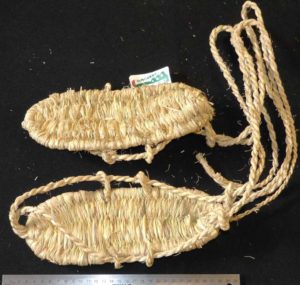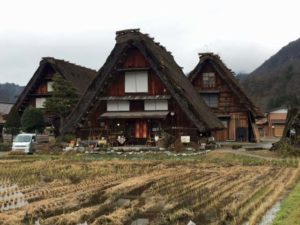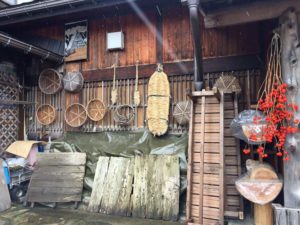This pair of sandals is very similar to Japan3 (JpK9) already in the collection. The nice addition is that we know exactly where in Japan the new sandals were made, a small village in Gifu Prefecture named Shirakawa-go, located at the foot of Mt. Haku-san in the northwest corner of the perfecture. This village was registered as a UNESCO World Heritage Site in 1995 partly because many traditional Japanese crafts such as sandal weaving are still practiced there.
Leigh Moyers bought these sandals and took the photos of the village while part of a US State Department delegation to Japan in December of 2016. This style sandal was used by Samurai warriors in past times as they are lightweight and can be secured onto the lower leg using the long tie cords. They are still used by some practitioners of martial arts and primarily by monks today. The material used to make these sandals appears to be rice straw. Since Japan14 is so similar to Japan3, which as already been included in the phylogenetic analysis of the collection, it is possible to use the computer generated designation JpK9 (Japan3) to determine which sandals are most similar to Japan 14. The answer is interesting and revealing. I leave it to the interested reader to explore the answer starting on the Sandal Relationships page.


